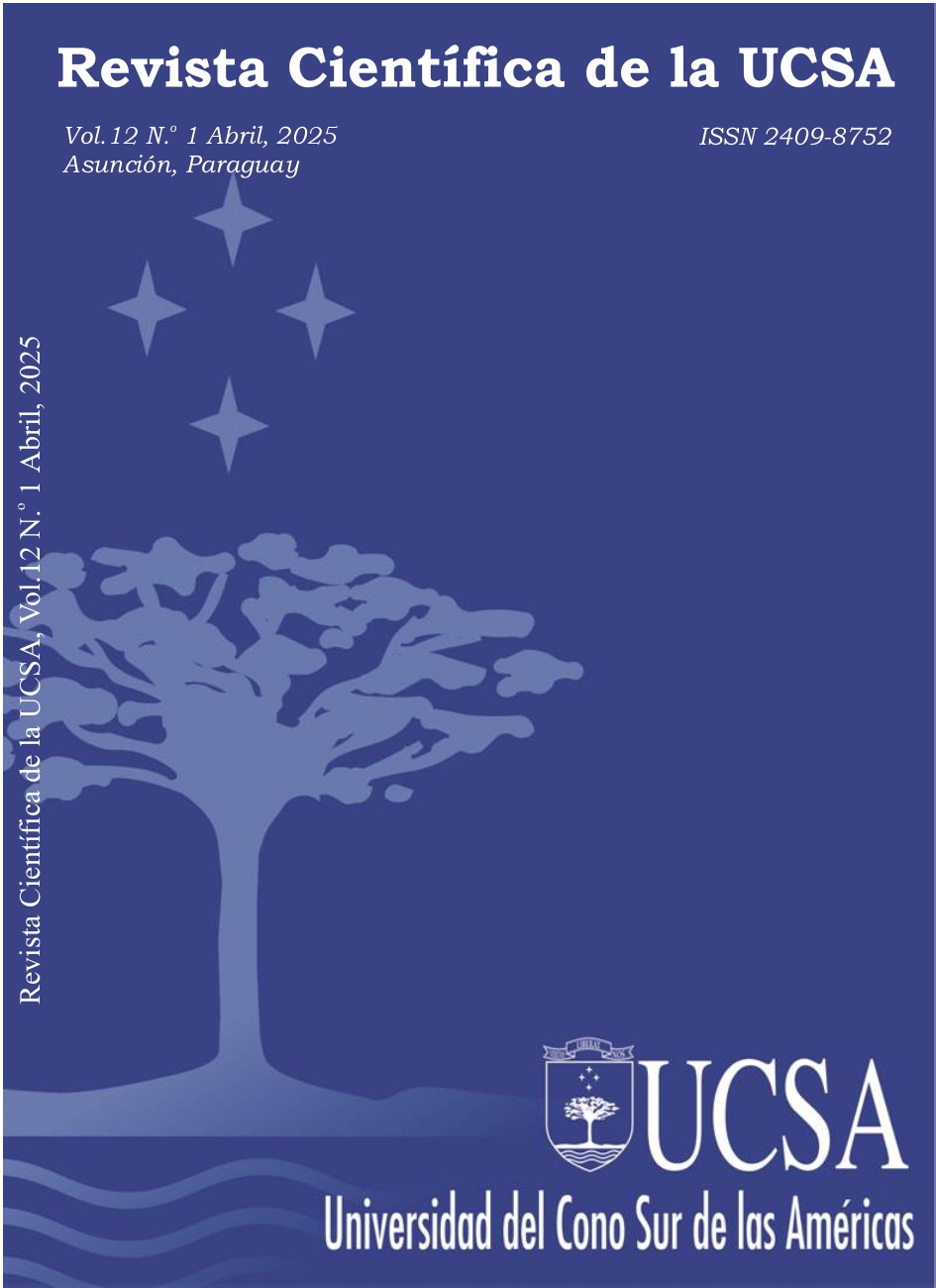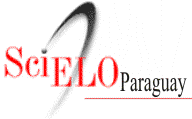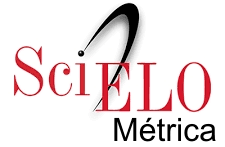Economic incidence of the use of water in the production of goods in the paraguayan basic family basket. Year 2022
DOI:
https://doi.org/10.18004/ucsa/2409-8752/2025.012.01.031Keywords:
water, water footprint, basic basket, ParaguayAbstract
This research arises from the problematization of the water resource, water, due to its importance since it is a finite, vulnerable resource and therefore recognized as an economic good. The objective of this research was to analyze the economic impact of the use of water in the production of goods in the basic Paraguayan family basket. For this, the indicator used for the calculation was the water footprint, in order to identify the amount of water in liters not accounted for in the production process. The research modality was bibliographic-documentary, descriptive, explanatory, analytical-synthetic. Subsequently, the monetary calculation of the 27 selected food goods was carried out, delimited according to criteria established in the research, which allowed the individual calculation of the goods and the total calculation of the basic basket, in liters and in monetary units. The results showed that there is a large amount of vital liquid substance in the selected food goods, therefore, a high unaccounted monetary cost; That is, the real amount of water present in the goods in the basket is greater than what is counted. It is concluded that the use of water has an economic impact on the production of goods in the basic basket and that a greater total water footprint corresponds to a greater monetary cost.
Downloads
References
Ansorge, L. (2020). Huella Hídrica: Dos Metodologías Diferentes Una Respuesta a Sara Edith Bueno Pérez et al.
Arévalo, D., Lozano, J., y Sabogal, J. (2011). Estudio nacional de huella hídrica Colombia sector agrícola. Revista Internacional de sostenibilidad, tecnología y humanismo, (6), 101-126. Disponible en http://hdl.handle.net/2099/11915
Batista, J. (2015). Regreso a Dublín: ¿gestionan las comunidades tradicionales el agua como recurso económico? Tecnología y ciencias del agua, 6(2), 101-111
Billinghurst, T. (2020). Huella hídrica y optimización del consumo de agua en empresas. Disponible en: https://hdl.handle.net/20.500.12805/1411
de la Torre, F. (2017). Los recursos hídricos en el mundo: cuantificación y distribución. Cuadernos de estrategia, (186), 21-70.
Food and Agriculture Organization of the United States - FAO (2013). Agro noticias: Actualidad agropecuaria de América Latina y el Caribe. La Huella Hídrica. Disponible en https://www.fao.org/in- action/agro noticias/detail/es/c/511925/
Hoekstra, A., Chapagain, A., Aldaya, M., y Mekonnen, M. (2021). Manual de evaluación de la huella hídrica. AENOR, España. Disponible en: https://www.waterfootprint.org/resources/multimedia-hub/
BACCN (2014). Ley N° 3239 / De los recursos hídricos del Paraguay. Recuperado de https://www.bacn.gov.py/leyes-paraguayas/2724/de-los-recursos-hidricos-del-paraguay
Mateo, M., Toja, Y., Barrero, M., y Navarro, D. (2019). La huella hídrica en el ciclo urbano del agua. Tecnoaqua, (35), 102-106. Disponible en: https://scholar.google.es/scholar?hl=es&as_sdt=0%2C5&q=La+huella+h%C3%ADdrica+en+el+ciclo+urba%20no+del+agua.+Tecnoaqua&btnG=
Meaurio, J., Brítez., S., Villaverde, L., Martínez., D., Delvalle, M., Centurión, F., Espinoza, L., Ferreira, N., Lugo, E. y Sosa de Wood, P. (2022). Categorización de la Canasta Básica Alimentaria de la ciudad de Encarnación, período agosto-diciembre-2021. Revista Sobre Estudios E Investigaciones Del Saber académico, (16), e2022007. Disponible en https://revistas.uni.edu.py/index.php/rseisa/article/view/302/299
Mekonnen, M. y Hoekstra, A. (2010) The green, blue and grey water footprint of crops and derived crop products, Value of Water Research Report Series No.47, UNESCO-IHE.
Mekonnen, M. y Hoekstra, A. (2011) The green, blue and grey water footprint of crops and derived crop products, Hydrology and Earth System Sciences, 15(5): 1577-1600.
Moratilla, F., Moreno, M., y Barrena, M. (2010). La huella hídrica en España. Revista de Obras Públicas, 157(3514), 21-38.
Organization for Economic Co-operation and Development - OECD (2022). Assessing the environmental and economic value of water: review of existing approaches and application to the Armenian context. Recuperado de: https://www.oecd.org/env/outreach/AM%20Water%20Value.pdf
Ortega, G. y Portillo, A. (2015). El agua: ¿Bien común o mercancía? Base-IS. Recuperado de http://biblioteca.clacso.edu.ar/Paraguay/base-is/20170331044501/pdf_1236.pdf
Pachito, X. (2021). El valor económico de la huella hídrica en el Estero Salado, sector de la ciudad perdida en la ciudad de Guayaquil (Tesis Universitaria). Facultad de Ciencias Económicas. Universidad de Guayaquil. Recuperado de:
http://repositorio.ug.edu.ec/handle/redug/58638
Preciado, J. et al (2023) La economía de subsistencia en hogares pobres: El papel crucial de la canasta básica como estrategia de supervivencia. Polo del conocimiento. Disponible en: https://www.polodelconocimiento.com/ojs/index.php/es/article/view/5534/13678
Secretaría de Defensa del Consumidor y el Usuario – SEDECO (2022). Monitoreo Canasta Familiar año 2022. Disponible en:
Seguí, L., Rodríguez, M., Urrea, M., y Guerrero, H. (2019). Water Stress: Gestión del agua, huella hídrica y economía circular. Disponible en: https://www.researchgate.net/publication/335001667_Water_Stress_Gestion_del_agua_huella_hidricay_economia_circular
Water Footprint Network - WFN. (2022). Objetivos e Historia. Water Footprint Network-WFN. (2022). ¿Qué es una huella hídrica?. Disponible en: https://waterfootprint.org/en/water-footprint/what-is-water-footprint/














